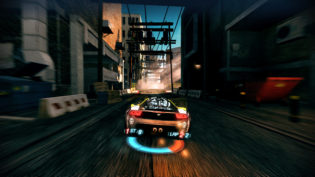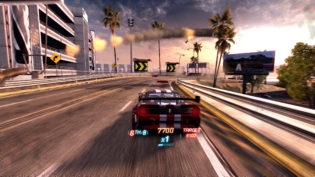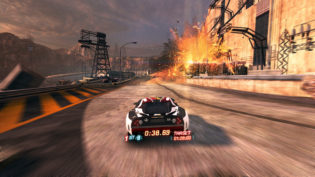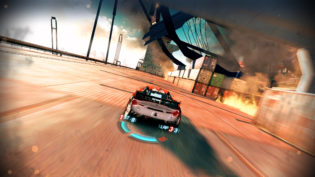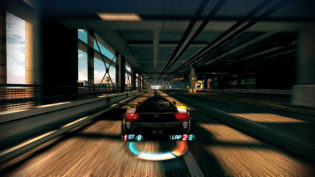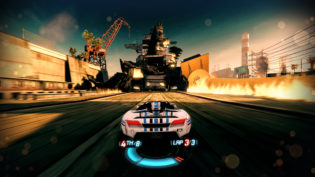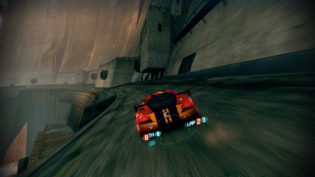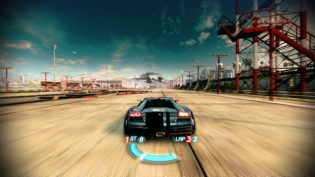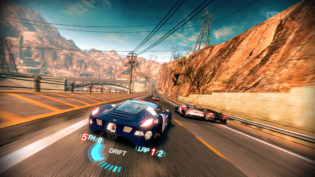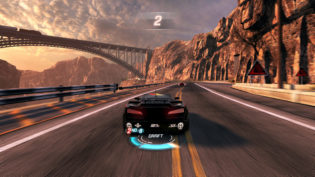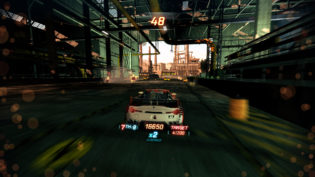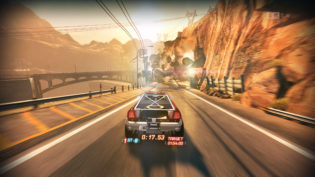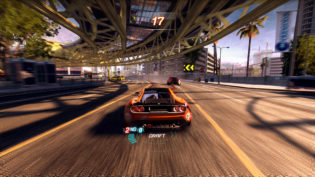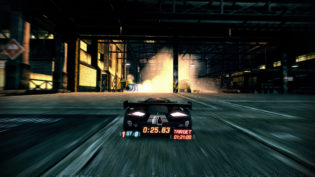There used to be a time I regularly played fun arcadey racing titles. But then two things happened. First – racing titles started to pursue the open world concept that made all of them move farther from the simplicity and joy of just selecting a car, a track and going. Second – the popularity of more sim-like arcade racing games like Forza Horizon and Grid, games that I just can’t get into to this day. The nice thing is that the last two greats of the genre that I loved were among the best I’ve ever experienced – Split/Second and Need for Speed: Hot Pursuit, both released in 2010. The sad thing is – there hasn’t been a single racing game since 2010 (the remaster of Hot Pursuit notwithstanding) that I’ve genuinely enjoyed. Is Split/Second as amazing as I remember it being?
Describing a game like Split/Second is very easy and also somewhat difficult at the same time. It’s a cinematic action racing game – that’s the very easy description. What that means, though, is that it plays like an arcade racing title (think – most Need for Speed titles) but you can take down your opponents during the race. Not directly by ramming them (like Burnout or FlatOut) but also not via some sort of weaponry (like Twisted Metal or kart racing games). Instead, the race tracks themselves are full of traps that you, or your opponents, can activate as long as they have enough meter filled in.
These “power plays” are divided into two types. The blue ones are usually simpler and smaller in scale and involve triggering explosions with more limited area of effect, activating heavy machinery or close some paths. In some tracks they may also open timed shortcuts. The red power plays cause much bigger changes to the race track to the point where some of them allow you to completely switch a part of the track to a different route. Or, if used as traps, cause entire buildings to collapse or planes to crash land on opponents. The route switches are extremely explosive in nature as well, with ships crashing into parts of the road or giant towers collapsing. This feature never gets old and either triggering them or narrowly escaping others is always exciting.
And it helps that there’s basically nothing else to distract from this in the game as well as everything is as streamlined as possible. You choose a car, choose a race track and off you go. The UI is among the smartest I’ve ever seen in games, keeping just what you need to know and putting it right behind the car where it’s always easy to see. The race tracks themselves are varied enough, so while they are not numerous, the change in time of day or change in what part of each track gets used in the race often completely transforms the experience. And the fact that the whole game is fantastically presented as a TV show with next episode previews and intros adds cool flavor to the whole package that already looks great (even today) and sounds amazing. Speaking of – the soundtrack is composed specifically for this game and wonderfully fits the action on screen, dynamically adapting to the situation.
Some things have been frustrating back in 2010 and remain so today. The survival modes, where you have to battle attack helicopters or overtake trucks, are way too random and poorly thought out to be as fun as their concept implies. The way opponent AI works can be annoying in that they are far less aggressive against each other, especially when going far in the lead, than they are against you. Changing routes on these bastards definitely helps make the problem less frustrating (unlike FlatOut 2/UC, where opponents far in the lead are basically unreachable), but it’s still too noticeable to ignore. And the most infuriating thing is that the situations that count as crashes and which don’t can feel very random – sometimes you lightly slide into a wall and crash, sometimes you get thrown into an obstacle with insane speed and continue going. Also the crash cams, just like in Burnout and Hot Pursuit – they distract and cause more issues than they help and there’s no way to disable them.
Some issues got more apparent with time. The PC port, for example, doesn’t have all DLC content that was released for the game. The controller support, that I definitely remember being consistent on release, got broken somewhere along the way so nowadays you can only use the controller in the race, but not the menus, unless you use Steam Input or another alternative mapping feature. Some aspects of the game don’t scale quite as good to resolutions higher than 1080p which can be noticeable in the otherwise fantastic presentation. Online functionality (that was actually really fun) has been disabled, though LAN is still there so things like Remote Play are possible.
I feel as if Black Rock Studio could’ve made their sequel, instead of being closed just a year after this game’s release by Disney, it would’ve been a straight improvement. And I would’ve been replaying and talking about that game instead, as flaws of Split/Second are notable. But because there was no sequel and because the racing went in such a different direction, there’s nothing really quite like this even today. And despite the issues that the game has, it’s exciting and extremely fun. Definitely give it a try if you haven’t already.


